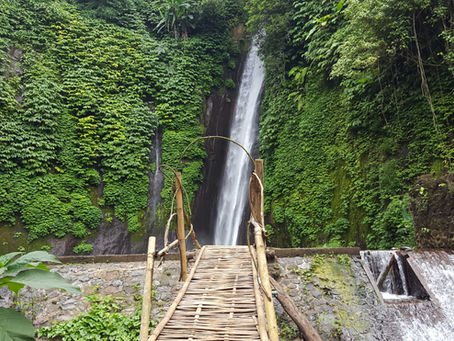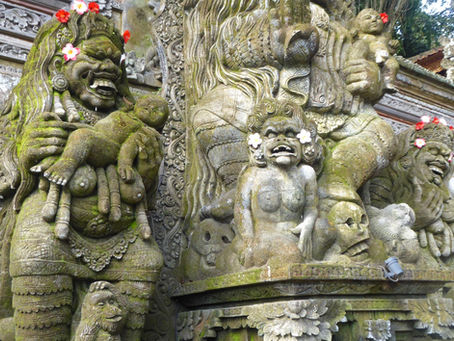top of page

GLOBAL SHANANIGANS

Search


Chiang Rai’s Blue Temple - Wat Rong Suea Ten
Wat Rong Suea Ten, known as the Blue Temple, commands attention with its striking sapphire and gold tones, a bold statement in Chiang Rai’s spiritual landscape. Finished in 2005, it rises on the site of a long-abandoned shrine, quietly reclaiming a space rich in history. Local artist Phuttha Kabkaew envisioned a temple that honours the elegance of traditional Buddhist art while pushing it into a contemporary realm, creating a design that feels both rooted in heritage and unmi
Shannon


Munduk Waterfall
Flowing through Bali’s northern highlands, Munduk Waterfall is more than a natural wonder. Surrounded by forests, clove plantations and jungle cliffs, it is a sacred site where guardian spirits dwell and restless souls are said to linger. Visitors come not only for its refreshing pools but to feel the ancient energy that makes the place alive, watchful and transformative.
Shannon


Blood and Shadows - Unmasking the Leyak’s Curse
In the dark heart of Balinese folklore, the Leyak is one of the island’s most feared witches but they do not act alone. They serve Rangda, the merciless queen of black magic, whose monstrous face and pitiless power embody Bali’s deepest terrors.
Shannon


Yeh Pulu - Water of the Stone Jar
Hidden in a lonely ravine between the Petanu and Pakrisan Rivers, the ruins of this unique 14th-century rock relief lay buried for centuries under volcanic eruptions and vegetation. The site was excavated by Dutch authorities in 1925 and in 1949, a stone gutter was cemented on top in order to drain off water, to prevent erosion and vegetation from taking hold, revealing even more of the stone mural.
Shannon


The Dark Legend of Calon Arang - Bali’s Most Feared Witch
In the black veins of Balinese and Javanese mythos, no figure evokes more dread than Calon Arang. Her story isn’t just about sorcery, it’s about what happens when society pushes a woman too far and she decides to burn the world down rather than be erased by it. She was no mere witch, she became the storm of death incarnate. The widow of Girah and the devourer of life.
Shannon


Love Waterfall and the Fairy’s Curse
Located about 13km's down a winding alpine road from Sa Pa town, the majestic Silver Waterfall thunders 200 metres down the cliffs of the Hoàng Liên Son Mountains from the headwaters of the Lo Sui Tong peak. Known to locals as "Thác Bạc" the falls are fed by glacial runoff that originate near the summit of Fansipan, the highest peak and "Roof of Indochina"
Shannon


Reed Flute Cave
The Reed Flute Cave, or Ludi Yan as it is known locally, has a fascinating history that stretches back over 1200 years, beginning during the Tang Dynasty. This 180 million year old karst cave complex, located in Guilin, has long been a symbol of natural beauty and historical significance. Its geological formations are a breathtaking testament to the slow, steady power of time, yet its human history is just as remarkable.
Shannon


The Sacred Sword of Preah Khan
This significant temple complex, within the dense jungles on the northern edge of the Angkor Archaeological Park, was commissioned by the great King Jayavarman VII in honour of his father and the Bodhisattva of universal compassion, Avalokiteshvara. Known as Preah Khan, or the Sacred Sword, the temple was erected in 1191 during the golden years of the ancient Khmer Empire.
Shannon
bottom of page